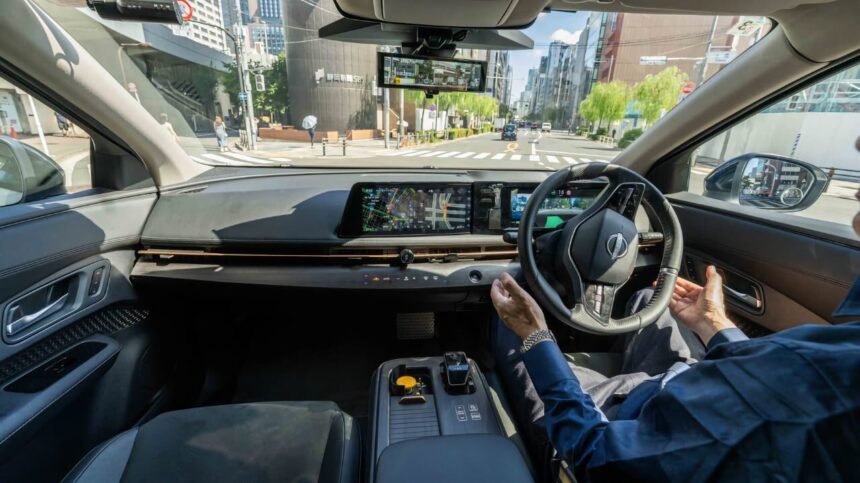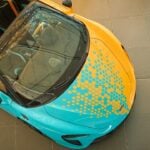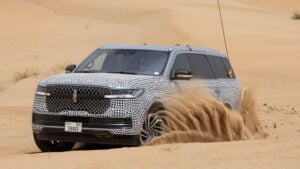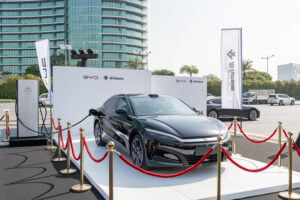Nissan has started public demos of its next-generation ProPILOT driver-assist. The system blends Wayve’s “AI Driver” with Nissan’s Ground Truth Perception and a new LiDAR unit on the roof. Tests ran on Ariya-based prototypes in central Tokyo. Nissan is targeting a Japan launch on select models in FY27.
What’s actually new
More brains, better sensors, and a promise to handle messy city traffic with less drama. Nissan says the goal is safer, smoother assistance beyond highways.
- Wayve “AI Driver” integrated with Nissan’s perception stack
- Roof-mounted next-gen LiDAR joins 11 cameras and 5 radars
- Urban driving demos in downtown Tokyo on Ariya prototypes
- Target: FY27 rollout in Japan on select models
Nissan is moving ProPILOT from motorway helper to something that can cope with traffic lights, pedestrians and the chaos of city streets. The company has shown the system running in Tokyo, which is not exactly a gentle proving ground. The hardware suite scales up, and the software tries to act more like an attentive human than a jumpy robot.
Wayve’s AI Driver: the “human-like” bit
Wayve’s software processes camera feeds and predicts how a scene will evolve, not just who’s cutting across the lane right now. The claim is smoother decisions and faster reactions.
- Focus on scene understanding and anticipation
- High-speed processing for sudden changes
- Learns patterns to adapt across scenarios
Instead of flinching at every object, the system looks at the whole context and picks the safest move. That should mean fewer jerky stops and less second-guessing. If you’ve sat in a car that ping-pongs in its lane, you know why this matters.
Ground Truth Perception: why LiDAR matters
Cameras are great until they aren’t. LiDAR adds precise distance at range, which helps at speed and at night. Nissan’s demo cars carry a high-performance roof unit, tied into its Ground Truth Perception stack.
- Roof-mounted LiDAR for long-range, low-light detection
- Complements 11 cameras and 5 radars
- Aims at safer behaviour in complex urban roads
By fusing LiDAR with radar and cameras, the car should be more confident when visibility drops or when something unexpected appears. Think late-night highways or fast traffic merging from a blind side street. The point is redundancy, not gadget bragging.
Where this fits in Nissan’s roadmap
Nissan has moved from single-lane highway assist (ProPILOT) to multi-lane (ProPILOT 2.0). Next-gen ProPILOT is the step into cities, with Japan-market cars planned first in FY27. UAE timing isn’t announced.
- Evolution: ProPILOT → ProPILOT 2.0 → next-gen ProPILOT
- Initial market: Japan, select models, FY27 target
- Nissan CTO says it should feel like a skilled human at the wheel
This is still SAE Level 2. You keep your eyes up and hands ready, because you’re responsible. If you expected robo-taxis in Sharjah next week, put the popcorn away.
UAE angle: what to watch
No Middle East launch details yet, but the region is getting more connected and assisted features in mainstream Nissans. See our coverage of the Patrol’s new connected services and the NISMO launch for where Nissan tech lands here first. For broader autonomy context, we’ve also reported on cockpit AI and local standards work.
- Nissan Patrol gets next-gen connected services in the Middle East (Google built-in, new display) — read our news piece/
- Nissan Patrol NISMO 2025 launch in the region
- Cockpit AI and regional automated-driving standards work
What is Nissan’s “next-gen ProPILOT”?
It’s the upcoming version of Nissan’s driver-assist system that combines Wayve’s AI Driver software with Nissan’s Ground Truth Perception and a new LiDAR sensor.
When will it launch?
Nissan is targeting FY27 for select models in Japan. No Middle East dates are announced.
What sensors does it use?
Prototype vehicles use 11 cameras, 5 radars and a high-performance roof-mounted LiDAR unit.
Is this self-driving?
No. It’s SAE Level 2. A driver must be seated, pay attention and take control when needed.
Where was it tested publicly?
On complex urban roads in central Tokyo using Ariya-based prototypes.






















